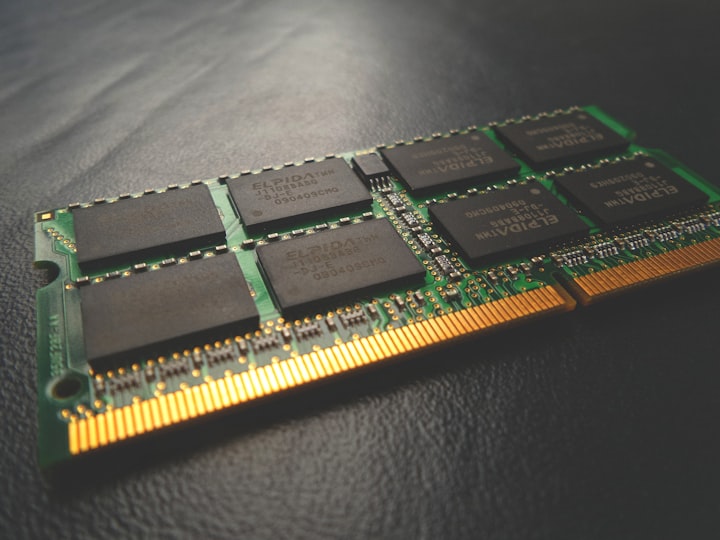Random Access Memory
Random Access Memory

When discussing RAM, or Random Access Memory, it's crucial to delve into its technical aspects, historical development, practical applications, and future prospects. Here's an outline that will help us cover these key areas within the 1500-word limit:
Introduction:
Brief overview of RAM and its importance in computing.
Mention of its role in storing data temporarily for fast access by the CPU.
Technical Overview:
Explanation of RAM as volatile memory that loses data when power is turned off.
Different types of RAM, including DRAM (Dynamic RAM) and SRAM (Static RAM).
Description of how RAM modules are integrated into computer systems.
Historical Development:
Evolution of RAM technology from early magnetic core memory to modern semiconductor-based RAM.
Milestones such as the invention of the first DRAM cell by IBM in the 1960s and the development of the first commercial RAM chips in the 1970s.
Advances in RAM density, speed, and efficiency over the decades.
Practical Applications:
Importance of RAM in computer systems for storing data and program instructions temporarily.
Impact of RAM size and speed on system performance, including multitasking capabilities and responsiveness.
Role of RAM in various computing devices, from personal computers to smartphones to servers.
Future Trends:
Emerging technologies and research areas aimed at improving RAM performance and efficiency.
Potential applications of non-volatile RAM (NVRAM) technologies such as MRAM (Magnetoresistive RAM) and PCM (Phase Change Memory).
Challenges and opportunities in scaling RAM to meet the demands of emerging computing paradigms such as artificial intelligence and quantum computing.
Conclusion:
Recap of the importance of RAM in computing and its ongoing evolution.
Reflection on the role of RAM in shaping the future of technology and innovation.
Let's explore these aspects in detail:
Introduction:
RAM, or Random Access Memory, serves as the temporary storage space in a computer system, allowing for fast access to data and program instructions by the CPU (Central Processing Unit). Unlike permanent storage devices such as hard drives or solid-state drives (SSDs), RAM is volatile memory, meaning it loses its contents when power is turned off. This makes RAM ideal for storing data that needs to be accessed quickly during the operation of a computer system.
Technical Overview:
RAM comes in various forms, but the two primary types are DRAM (Dynamic RAM) and SRAM (Static RAM). DRAM is the most common type of RAM used in modern computers, offering high density at a relatively low cost. However, DRAM requires periodic refreshing to maintain data integrity, which can impact performance. SRAM, on the other hand, is faster and more expensive than DRAM but does not require refreshing, making it ideal for use in cache memory and other high-performance applications.
RAM modules consist of integrated circuits containing memory cells that store binary data as electrical charges. These modules are typically installed on the motherboard of a computer system and connected to the CPU via a memory controller. The amount and speed of RAM installed in a system can have a significant impact on its performance, particularly in tasks that involve multitasking or working with large datasets.
Historical Development:
The development of RAM can be traced back to the early days of computing, with the invention of magnetic core memory in the 1950s. This technology used tiny magnetic cores to store data and was the primary form of RAM for early computers. However, it was bulky, expensive, and limited in capacity.
In the 1960s, IBM introduced the first DRAM cell, which used a capacitor to store charge instead of a magnetic core. This innovation paved the way for the development of semiconductor-based RAM chips, which became commercially available in the 1970s. These early RAM chips were much smaller and more efficient than magnetic core memory, leading to significant advancements in computer technology.
Over the decades, RAM technology continued to evolve, with improvements in density, speed, and power efficiency. The introduction of new manufacturing processes and materials allowed for the production of higher-capacity RAM chips at lower cost. Today, modern computers utilize DDR (Double Data Rate) SDRAM (Synchronous Dynamic RAM) modules, which offer high-speed data transfer rates and large capacities for demanding applications.
Practical Applications:
RAM plays a crucial role in the operation of computer systems, serving as the primary workspace for executing programs and processing data. When a program is launched, its instructions and data are loaded into RAM from storage devices such as hard drives or SSDs. The CPU then accesses this data from RAM as needed, allowing for fast execution and smooth multitasking.
The size and speed of RAM installed in a computer system can have a significant impact on its performance. Systems with larger amounts of RAM can handle more applications and data simultaneously without experiencing slowdowns or delays. Similarly, faster RAM modules can improve system responsiveness and reduce loading times for programs and files.
In addition to personal computers, RAM is used in a wide range of computing devices, including smartphones, tablets, gaming consoles, and servers. In smartphones, RAM allows for smooth multitasking and efficient app switching, while in servers, large amounts of RAM are essential for handling concurrent user requests and running virtualized environments.
Future Trends:
Looking ahead, the future of RAM technology holds exciting possibilities for further improving performance and efficiency in computing devices. One area of research is non-volatile RAM (NVRAM), which retains data even when power is turned off. Technologies such as MRAM (Magnetoresistive RAM) and PCM (Phase Change Memory) offer the potential for faster access times and lower power consumption compared to traditional DRAM.
Another trend is the integration of RAM and storage technologies, blurring the distinction between volatile and non-volatile memory. Hybrid memory architectures, combining DRAM with emerging storage-class memory (SCM) technologies such as 3D XPoint, aim to provide the speed of RAM with the persistence of storage, offering a compelling solution for memory-intensive applications.
Furthermore, advancements in packaging and interconnect technologies are enabling the development of high-bandwidth memory (HBM) solutions, which stack multiple memory layers vertically to increase capacity and bandwidth. HBM is particularly well-suited for applications such as graphics processing units (GPUs) and artificial intelligence accelerators, where high-speed data access is critical.
Despite these promising developments, challenges remain in scaling RAM to meet the demands of emerging computing paradigms such as artificial intelligence and quantum computing. As data volumes continue to grow exponentially, researchers and engineers will need to innovate new memory architectures and materials to keep pace with the evolving needs of the digital age.
Conclusion:
In conclusion, RAM plays a foundational role in modern computing, providing fast, temporary storage for data and program instructions. From its humble beginnings in magnetic core memory to the cutting-edge semiconductor-based technologies of today, RAM has undergone remarkable advancements over the decades. As computing devices become increasingly powerful and interconnected, the demand for faster, more efficient RAM solutions will only continue to grow. By embracing emerging technologies and addressing the challenges of tomorrow, RAM will remain a cornerstone of innovation and progress in the digital age.
About the Creator
WILLIAM DIAGO RODRIGUES
Hi! Everyone out there I am a Online Enterpreneur love to create, write and ellaborate different niches and write different Articles to entertain and help to give and spread the knowledge which i can incalcate through different search Engin






Comments
There are no comments for this story
Be the first to respond and start the conversation.